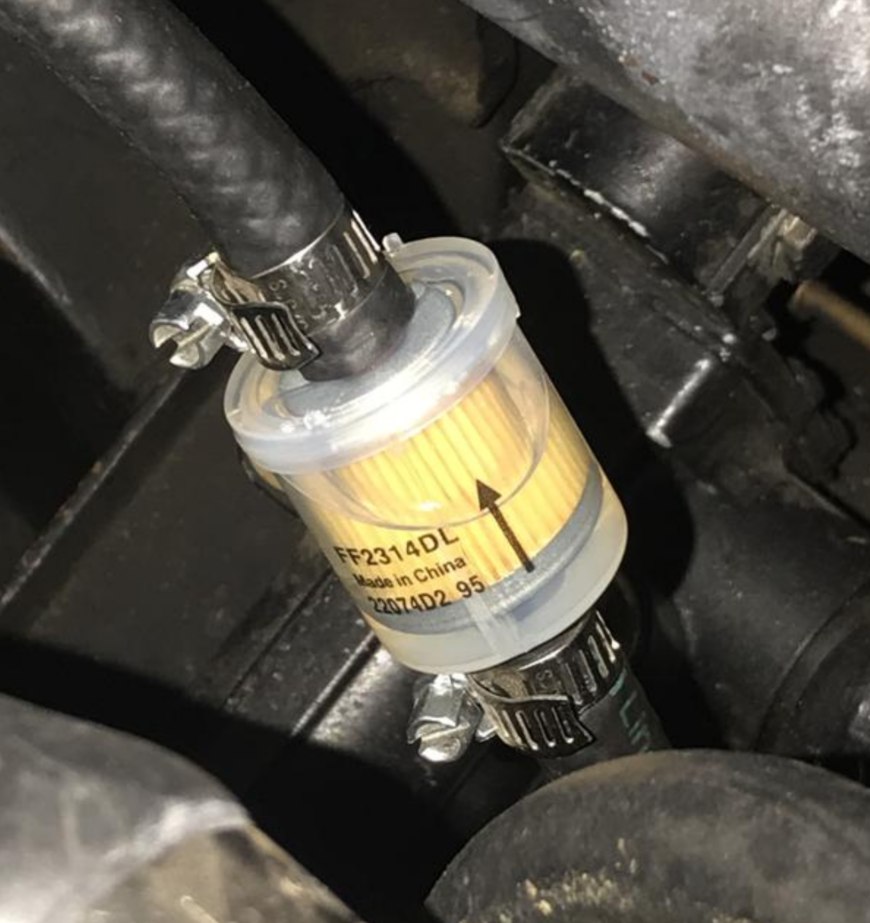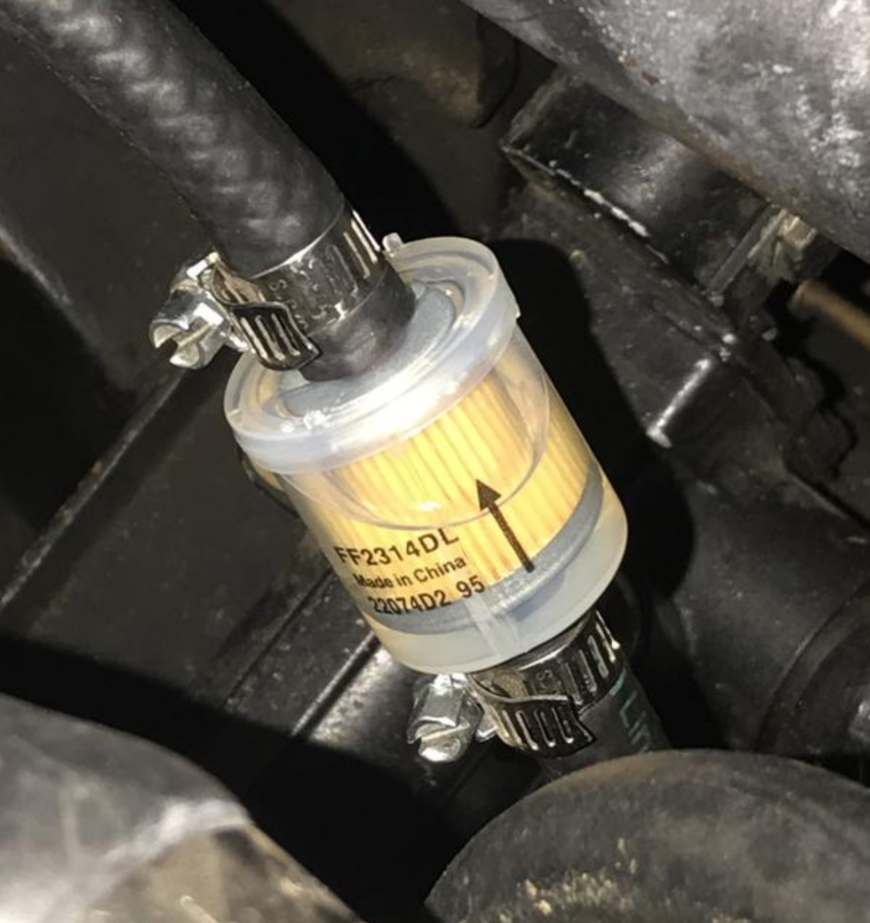WHY REPLACE YOUR FUEL FILTER
Isn’t fuel clean already? So how does a fuel filter get dirty? Contrary to popular belief, the fuel that gets pumped into your car isn’t as clean as your engine needs it to be. Dirt, dust, and other contaminants find their way into your fuel at each point it gets transferred – from the depot to the tanker, from the tanker to the fuel station, and from the gas pump to your fuel tank.
Left unchecked, the particles could clog up the fuel injectors, get into the combustion chamber, or gum up the fuel pump and other parts. So, a fuel filter is installed from the factory on many cars that strains out particles that could cause damage and stores them until it’s replaced and discarded. If you don’t change it, the particles begin to block your fuel flow, resulting in performance issues.
Typically, you’ll need to change a fuel filter every two years or 24,000 miles, whichever comes first, but maintenance schedules vary. Check your owner’s manual for service recommendations, and make sure you change the fuel filter on time to prevent the fuel filter from getting restricted.
TOOLS AND SUPPLIES NEEDED
For most vehicles, the fuel filter is located on a frame rail, out in the open. You’ll need to get access to it, and you’ll require a handful of tools and supplies to get the job done right. They include:
- A new fuel filter of the correct type for your car
- Safety glasses and gloves
- Jack and jack stands (if needed for vehicle access)
- Wrench set (socket or open-ended, depending on your vehicle)
- Flathead screwdriver
- Needle-nose or hose clamp pliers
- Rags or shop towels
- Plastic container or drip pan (for collecting spilled fuel)
- Penetrating oil (optional, for loosening rusted fittings)
- Thread sealant (if required for your specific vehicle)
As well, keep a fire extinguisher on hand for safety, as you are working with flammable materials.
STEP-BY-STEP GUIDE TO CHANGE YOUR FUEL FILTER
Vehicle models will differ in their process for how to replace a fuel filter, but the general steps are consistent. Wear your safety equipment and have your fire extinguisher nearby when you do the job.
- Consult your owner’s manual. Before starting, consult your vehicle’s owner’s manual to locate the fuel filter and understand the specific requirements for your car.
- Relieve fuel pressure. To avoid fuel spray, relieve fuel system pressure by removing the fuel pump fuse or relay and running the engine until it stalls. Turn off the ignition afterward.
- Park on level ground and secure the vehicle. Park your car on a flat surface and engage the parking brake. If needed, use a jack and jack stands to lift the car for easier access to the fuel filter.
- Locate the fuel filter. Find the fuel filter, typically located along the fuel line or near the fuel tank. Some options might also be under the hood in a self-contained canister.
- Place a drip pan. Position a plastic container or drip pan beneath the fuel filter to catch any spilled fuel.
- Disconnect the fuel lines. Using the appropriate wrench or pliers, loosen and disconnect the fuel lines connected to the fuel filter. Be prepared for some fuel to spill out.
- Remove the old fuel filter. Unclamp or unbolt the old fuel filter from its mounting bracket and carefully remove it from the vehicle.
- Install the new fuel filter. Place the new fuel filter in the mounting bracket, making sure the flow direction arrow aligns with the direction of fuel flow. Secure the filter using the original clamp or bolt.
- Reconnect the fuel lines. Reattach the fuel lines to the new filter, ensuring they are tightly secured. Apply thread sealant if required for your specific vehicle.
- Reinstall the fuel pump fuse or relay. Replace the fuel pump fuse or relay to restore fuel system pressure.
- Inspect for leaks. Start the engine and check for any leaks around the new fuel filter. If you notice any leaks, turn off the engine and tighten the connections as needed.
TIPS FOR MAINTAINING YOUR FUEL SYSTEM
Maintaining your fuel system is crucial for optimal vehicle performance and fuel efficiency, and to prevent your fuel filter from getting clogged prematurely. Here are some tips to help you keep your fuel system in good condition.
- Use high-quality fuel. Choose reputable gas stations and use the appropriate fuel grade recommended by your vehicle’s manufacturer to prevent contaminants from entering your fuel system.
- Replace fuel filter regularly. Follow your vehicle’s maintenance schedule to replace the fuel filter at recommended intervals, ensuring proper fuel flow and preventing debris from reaching the engine.
- Keep the fuel tank full. Avoid running your vehicle on low fuel, as this can cause sediment to accumulate in the fuel tank, potentially clogging the fuel filter or damaging the fuel pump.
- Clean fuel injectors. Periodically clean your fuel injectors using a fuel injector cleaner additive to prevent deposits from building up and affecting engine performance.
When you need a new fuel filter or any other parts for your car, choose AutoZone. With trusted names like Duralast and friendly, helpful advice from our in-store associates, we’re your source for everything automotive.
FAQ/PEOPLE ALSO ASK



